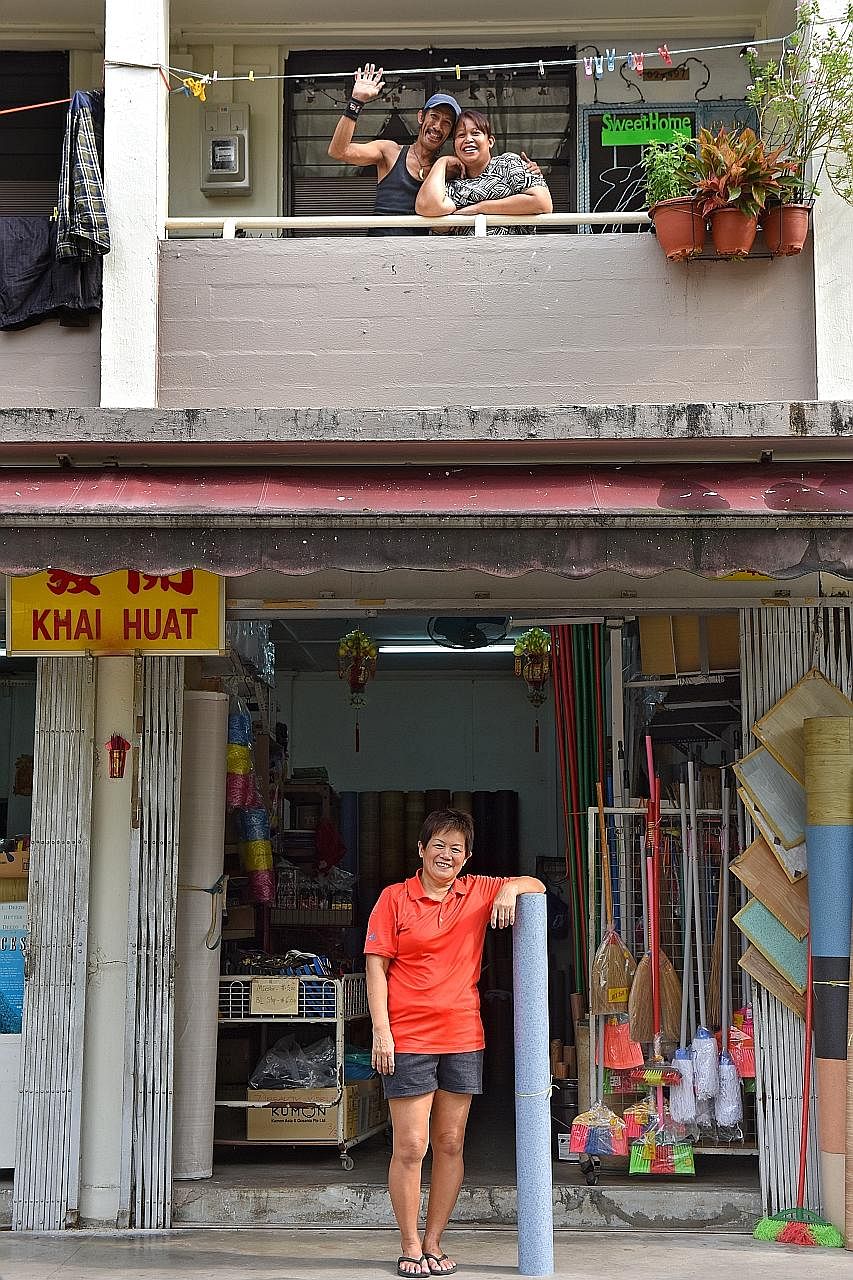Shops and coffee shops located directly below residential units on the ground floor of Housing Board blocks are common in older housing estates from Toa Payoh to Bedok.
It is a feature that many take for granted - the trend in newer housing estates or newer housing blocks is for shops to be located farther away from housing units.
For example, a supermarket could be located on the ground floor of a multi-storey carpark, as is the case in Block 88, Tanglin Halt Road, which was built in 2008.
"Town planners are trying to put commercial activities away from residents in new estates, who need peace and privacy. It's a lot of consideration on their part," said International Property Advisor chief executive Ku Swee Yong.
"Have you tried going to a void deck coffee shop in the older estates during the World Cup?" he said, referring to the noise level.

Instead, the one or two businesses found at void decks in newer estates often have clear social missions, like a pre-school or clinic, he added. This is just one of several trends that have changed the face of HDB shops across the island.
Another trend: traditional shophouses - double-storey units with a commercial space on the first floor and a residential area on the second - are now a dying breed.
The rise of centralised malls and town centres, which are also built by the HDB, has also directed traffic away from traditional shops.
In 1998, the HDB discontinued the direct sale of shops and hawker stalls to private landlords, just six years after its Sale of Tenanted Shops Scheme was introduced.
The first few years of the programme were a success, as shops were sold and resold at successively higher prices. But the Asian financial crisis around 1997 reduced retail spending drastically and the HDB discontinued the scheme.
Currently, the HDB manages 14,600 shops, of which 8,500 are privately owned and 6,100 are leased directly. These include shops in 20 HDB shopping complexes found in the heartland.
The HDB said retailers of privately owned shops can decide their own trade, while it will designate the trade of shops it leases to ensure they serve residents' needs. Kiosks, eating places and supermarkets make up about 16 per cent of HDB shops, it added in a statement.
With fewer traditional shops in the market, PropNex agent Mervyn Ng, a specialist in commercial shops, said: "In modern towns, you don't get that personalised neighbourhood feel, with your small traders or hair salon just downstairs."
Instead, it is more common to see franchised or chain stores, he said.
In older towns, though, there are stalwarts like Madam Mary Tan, 57, who runs an HDB shop selling vinyl flooring with her husband at Block 49, Stirling Road. As a child, she watched as the shop, formerly leased by her father, filled up with customers looking for vinyl flooring.
And while her shop has been with the family for the last 50 years, the shops in her row have changed hands more times than she can remember. "It's not like the old days - this area is not as lively as it once was, and people get their... things online, so it is quiet around here," she told The Straits Times in Mandarin.
In new estates, traditional shops are being replaced by more glamorous neighbourhood centres like the upcoming Oasis Terraces in Punggol. Other centres in the pipeline are in Sembawang, Hougang and Punggol Northshore.
Touted as the first of the HDB's next-generation neighbourhood centres, Oasis Terraces is a one-stop centre with 18,000 sq m of retail space for shopping, dining, and educational and enrichment centres. It will also house a polyclinic.
Said the HDB: "Town centres and neighbourhood centres provide a wide range of shops. They are supplemented with local shop clusters located within the precincts to meet the daily needs of the residents such as eating houses and minimarts, supermarkets and shops."
But some residents of the newer estates miss having a good spread of shops and coffee shops nearby.
Madam Anna Pang, 65, finds it hard to find cheap and good eating places in Punggol after moving there from Hougang two years ago. "In Hougang, everywhere you go you can find a void deck coffee shop, eat different dishes and talk to friends."
No matter how things change, HDB shopkeepers, especially longtime ones, remain a valuable part of the neighbourhood. Said Madam Tan, who runs the Stirling shop: "I can recognise almost every single resident here from his silhouette. We are friends, and it is hard to get that elsewhere nowadays."

